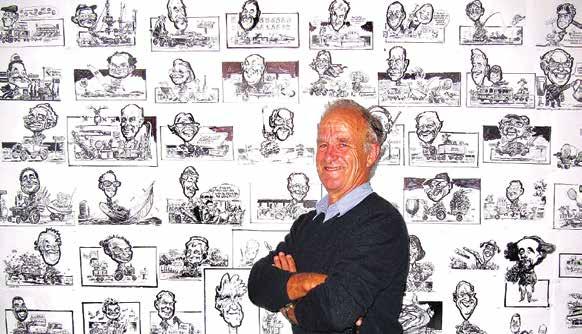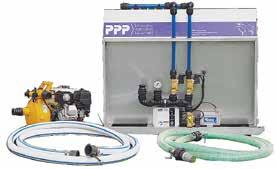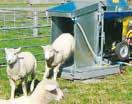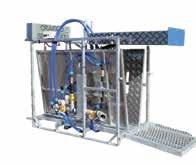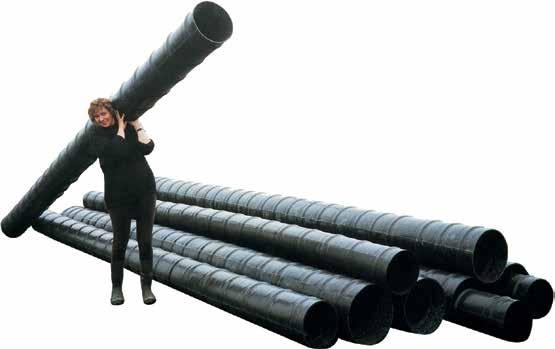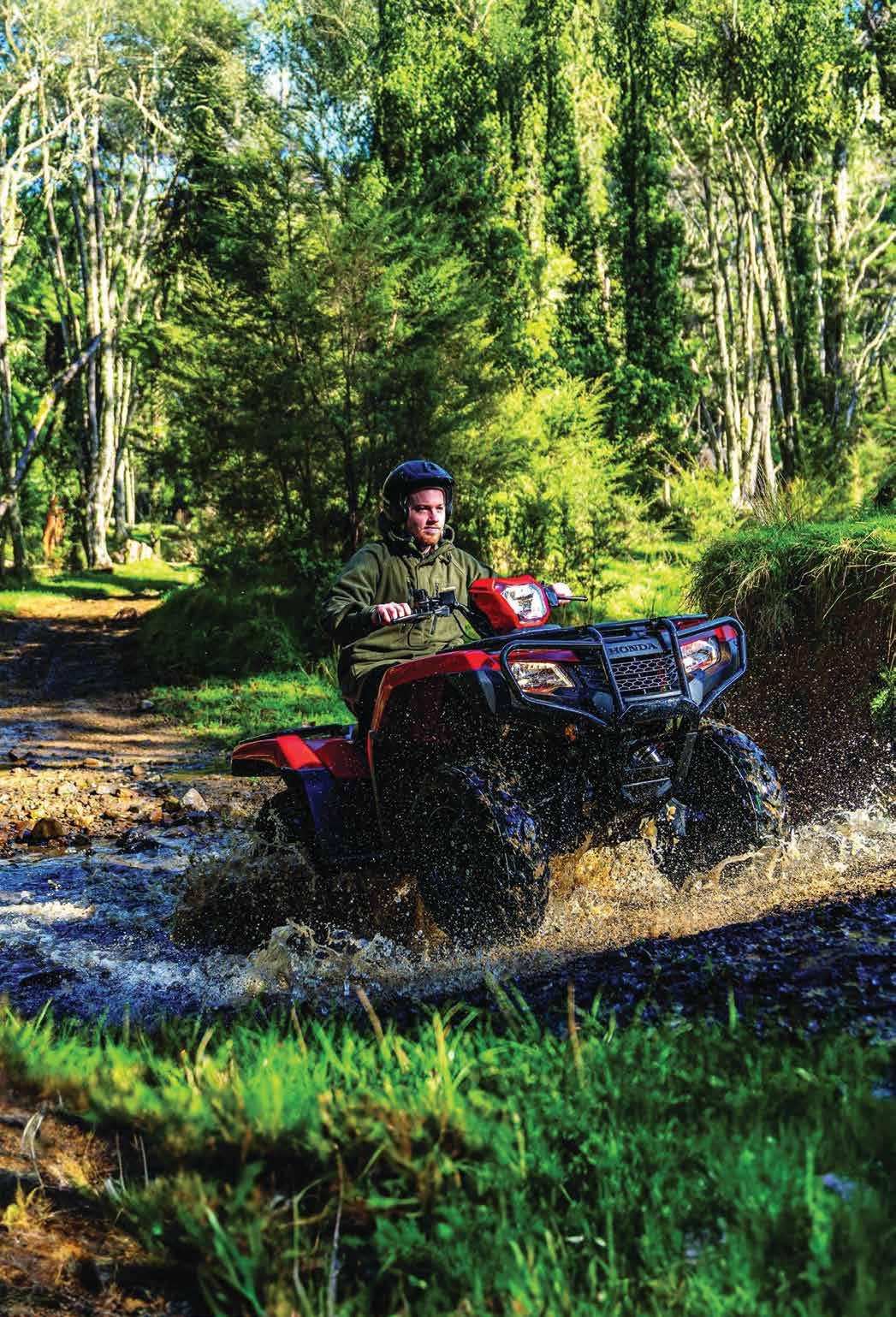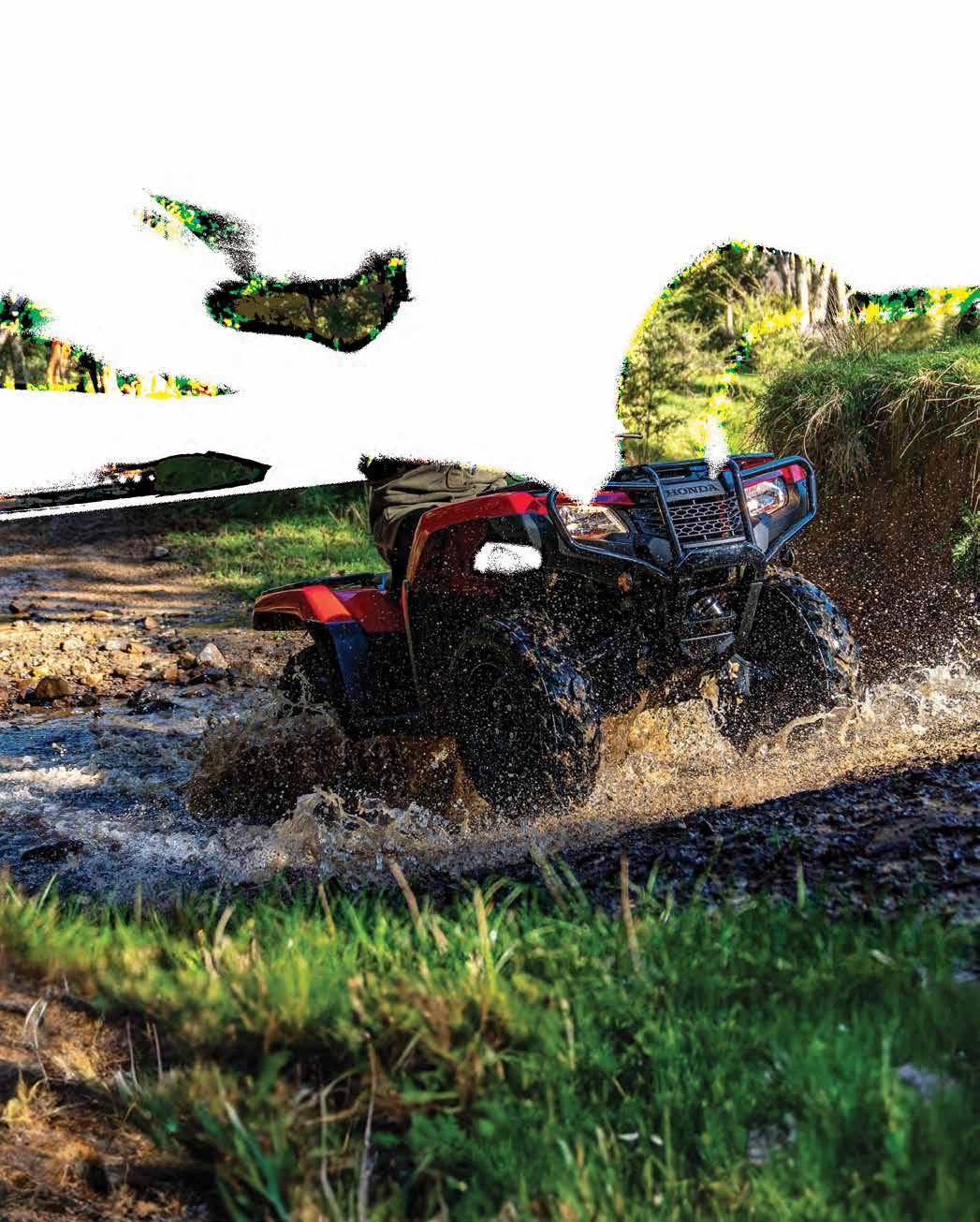






A BLOCKBUSTER year and an exciting performance: that’s how Ministry for Primary Industries (MPI) Director General, Ray Smith is describing the massive upsurge in the fortunes of the primary sector exports for the year ended June 2025.
Coby Warmington, 29, a farm manager at Waima Topu Beef near Hokianga won the 2025 Ahuwhenua Young Maori Farmer Award for sheep and beef. He’s pictured here with partner Holly Millan after receiving the trophy at the Ahuwhenua awards dinner held in Palmerston North this month.
Warmington said he was extremely surprised and happy at receiving the award. He entered the competition with the objective of looking to broaden his comfort zone and challenge himself socially and mentally and says that is exactly what happened. The other finalists in the 2025 competition were Grace Watson and Puhirere Tau. More on P4. PHOTO:
MPI’s latest Situation and Outlook for Primary Industries (SOPI) report is predicting that export returns for the year will be almost $60 billion – 12% up on last year and forecast to hit $65.8 billion by 2029.
Leading the charge is dairy which will see record export earnings of $27 billion (up 16%), horticulture $8.4 billion (up 19%) and meat and wool
eclipsing $12.3 billion (up 8%) All the other sectors are also up. This massive jump comes despite ongoing global trade uncertainty and broader macroeconomic challenges.
Smith says MPI have always seen themselves as good forecasters in the ag sector but says going from $53 billion to nearly $60 billion in a year is much better than they thought.
“Look at the dairy revenue at $27 billion - that’s added $4 billion more in export earnings - a phenomenal result,” he told Rural News
“Sheep and beef have done well despite it being a tough year and profitability is now returning to the sector.
“As for horticulture, led by $3.9 billion in kiwifruit exports – up a billon in just a year that is amazing. So, a big


shout-out to growers who have produced all this extra fruit and to Zespri who have managed to sell it at good prices” he says
Smith says it’s also good to see the wool sector start to gain some momentum with prices coming back and volumes up. He says the growth is right across the board in the primary sector with some areas that have suffered in the past such as avocados, doing well.
He says all primary producers along with processing companies and those taking products to market around the world should feel proud of their efforts.
“I think the world is a bit short of protein and people are recognising the value of NZ products because they are of consistently high quality, safe and food is incredibly nutritious and tastes great. We have been through a tough period, but we are now on the way up and despite some uncertainty out there we are well positioned for the future,” he says.
Agriculture Minister Todd McClay says the figures reflect the hard work and resilience of the hardworking men and women of provincial New Zealand. He says strong global demand and healthy prices across key markets are positioning our high-quality, safe and sustainable food and fibre exports for record growth.
McClay says a priority for the government is to open new markets Kiwi exporters, and the new Investment Boost tax incentive will encourage businesses to invest, be more competitive, grow the economy, and lift wages
“When rural New Zealand does well, the whole country benefits,” he says.







The Hansen Full Flow Ball Valve’s reputation for holding up in frosty weather is quite simply unsurpassed! The extraordinarily high quality design coupled with a host of practical features makes it the ultimate user experience. What’s more it’s the only NZ made Ball Valve with a 100% replacement warranty.
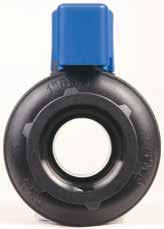
Male/Female or Female Thread Options
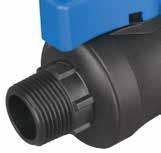





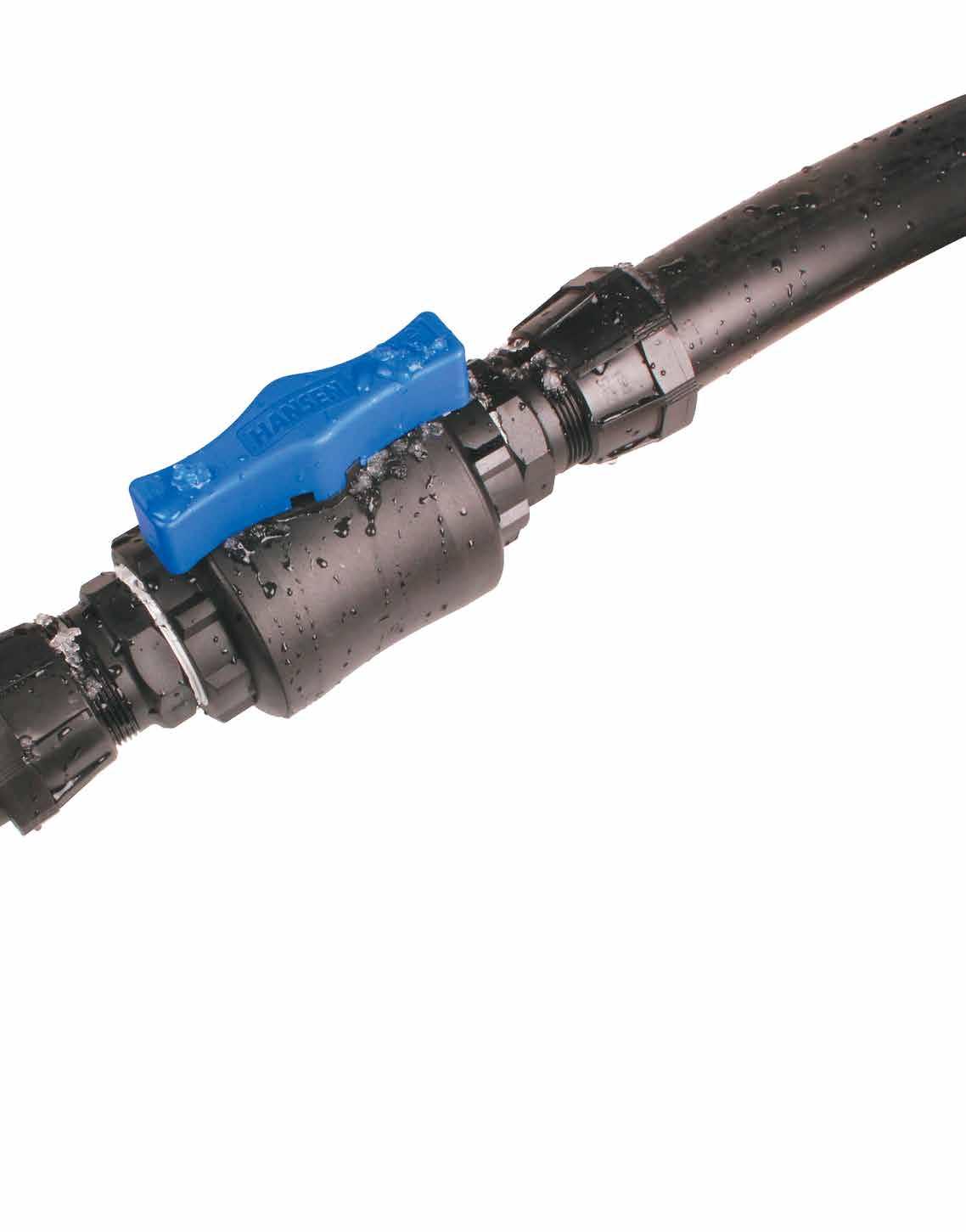

HEAD OFFICE
Lower Ground Floor, 29 Northcroft Street, Takapuna, Auckland 0622
Phone: 09-307 0399
Fax: 09-307 0122
POSTAL ADDRESS
PO Box 331100, Takapuna, Auckland 0740
Published by: Rural News Group
Printed by: Inkwise NZ Ltd
CONTACTS
Editorial: editor@ruralnews.co.nz
Advertising material: davef@ruralnews.co.nz
Rural News online: www.ruralnews.co.nz
Subscriptions: subsrndn@ruralnews.co.nz
19
KISSUN sudeshk@ruralnews.co.nz
THE DAYS of rising on-farm inflation and subdued farmgate prices are coming to an end for farmers, helping lift confidence.
Prices for farm inputs fell by 0.6% in the year to March 2025, according to Beef + Lamb NZ’s (B+LNZ) annual on-farm inflation report released last week. It notes that lower interest rates, together with modest decreases in some other input prices such as weed and pest control, fuel and fertiliser, lime and seeds have brought on-farm inflation down.
And DairyNZ’s View from the Cowshed report released at Fieldays last week reveals that 85% dairy farmers are proud to work in the sector, and over three-quarters believe the outlook for dairying will remain stable or improve over the next three years - signalling a lift in confidence despite ongoing challenges.
At the same time, higher prices for some of NZ’s major primary export products have been a feature of the past twelve months. Lamb, beef, and dairy product prices standout with prices over the past month up in the order of 40%, 30%, and 20% respec-

tively over the same period a year ago, according to BNZ Research’s Rural Wrap released recently.
B+LNZ chair Kate Acland says lower on-farm costs is a welcome respite for farmers after a 30% increase in prices since 2020.
Interest costs, which are a key driver of on-farm inflation, fell 13.9%.
The prices for weed & pest control and fuel also declined – by 5.3% and 3.7%. Prices for fertiliser, lime and seeds also fell by 0.7%.
However, the prices for other inputs increased, with insurance and rates up 11% and electricity up nearly 7%.
Underlying inflation – which is the change in farm input prices if interest costs are excluded – was 1.8% percent in the year to March 2025. Acland says farm-gate prices remain strong, and the outlook is relatively good.
“This is a positive change from recent years, when high on-farm inflation eroded profitability. This year, profits are expected to increase, even though total expenditure remains high,” she says.
DairyNZ chief executive Campbell Parker says the findings of its View from the Cowshed survey paints a picture of a sector that is passionate, resil-
ient, and progressive.
While confidence and pride are evident, the report also highlights key areas of concern. Rising farm expenses - particularly for feed and fertiliserwas the top challenge for individual dairy farmers, closely followed by regulatory compliance impacts.
A record farmgate milk of $10/kgMS last season and a similar opening forecast this season, is providing dairy farmers with some protection from high input costs but the same cannot be said for sheep farmers, who have faced poor farmgate returns.
However, red meat prices are firming. BNZ senior economist Doug Steel says the first thing to point out is that the past year’s price gain sees the price level for dairy, lamb, and beef products above their respective five-year average.
“The degree varies by product, but all are substantially above recent averages: lamb by 23%, beef by 39%, and dairy by 25%,” says Steel.
“In lamb’s case, prices are currently threatening to push through $9/kg on tightening supply, which has this season’s average pressing up to around $8.65/kg. That would be up about a third on the previous season and near the 2021-22 all-time high of $8.87/kg.”
RED MEAT farmers are urging the Government to act on the growing number of whole sheep and beef farm sales for conversion to forestry, particularly carbon farming.
Beef + Lamb New Zealand released updated independent research by Orme & Associates showing a further 38,921ha has been confirmed as sold since the last report in September 2024.
Revised confirmed sales in 2023 now total 29,518 hectares and in 2024 now 30,483 hectares – that figure is expected to rise as further sales are confirmed.
Sales through Overseas Investment Office approvals and to carbon-only forestry entities continue to dominate.
The total amount of whole sheep and beef farms sold since 1 January
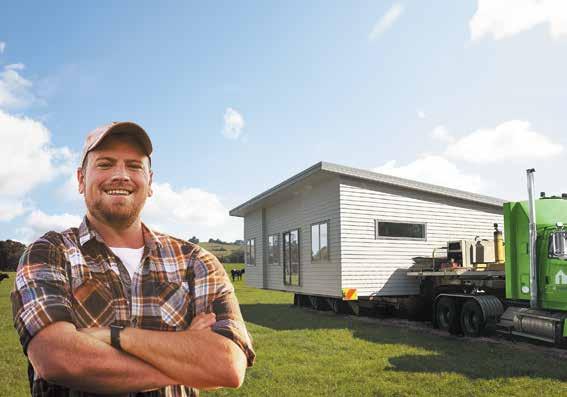
2017 is now over 300,000 ha.
B+LNZ chair Kate Acland says the figures reinforce the need for action.
“While we appreciate the Government’s announcement this week about legislation being introduced to restrict wholesale conversions based on land use classes, the numbers show whole-farm sales for conversion to forestry for carbon credits are continuing at pace.
“Anecdotally we’re still hearing of a significant number of farms being sold this year, despite the Government announcing the limits last year.
“We’re concerned that some sales are continuing on the basis of intent to purchase land before the limits were announced. We urgently need the Government to tighten the criteria around proof of intent to purchase.”
SCOOPED the pool at this year’s prestigious Ahuwhenua Trophy Awards - winning both the main competition and the young Maori farmer award.
Whangaroa Ngaiotonga Trust which runs a state-of-the-art bull fattening farm near the rural east coast settlement of Whangaruru was named the winner of the 2025 Ahuwhenua Trophy competition for the top Maori sheep and beef farm. At the same event, Coby Warmington from Waima in the Hokianga was named the top young Maori sheep and beef farmer for 2025
The announcement of the main Ahuwhenua trophy was made by the Minister for Maori Development, Tama Potaka, at an awards ceremony in Palmerston North before an audience of over 800 people. Potaka was joined by other special guests – Associate Agriculture Minister Nicola Grigg, the Maori Queen, a large group of overseas diplomats, local politicians and industry leaders and government officials.
The competition has now been running for 92 years and was inaugurated by Sir Apirana Ngata and the Governor General at the time, Lord Bledisloe, with the objective of encouraging Maori to improve their land and overall farming performance. The other finalist

COBY WARMINGTON, 29, a farm manager at Waima Topu Beef near Hokianga was named at the winner of the 2025 Ahuwhenua Young Maori Farmer Award for sheep and beef.
The announcement was made by the Maori Trustee, Dr Charlotte Severne at the Ahuwhenua awards dinner held in Palmerston North. This competition was inaugurated in 2012 and is designed to recognise up-and-coming young Maori in the pastoral and horticulture sectors. The other finalists in the 2025 competition were Grace Watson and Puhirere Tau.
Warmington says he was extremely surprised and happy at receiving the award. He says he entered the competition with the objective of looking to broaden his comfort zone and challenge himself socially and mentally and said that is exactly what happened.
Severne says Te Tumu Paeroa is proud

to sponsor the competition which is a celebration of the achievements of inspirational young Māori farmers thriving in the agrisector, all while championing the sustainability of the whenua. She says the awards continue to showcase the development of young Māori leaders and announced that each of the finalists would receive a $5,000 cash scholarship with the winner receiving an additional $5,000.
Lead judge Sam Vivian-Greer representing Te Tumu Paeroa says once again all three finalists had shown a passion and love for the sheep and beef sector and had made significant achievements in their respective roles.
The Chair of the Ahuwhenua Trophy Management Committee Nukuhia
Hadfield says all finalists displayed a great passion for the whenua and a desire to take their careers to new heights and into leadership roles.
Morris Pita, co-chair of Whangaroa Ngaiotonga Trust said just after the announcement his first impression was one of pride for the whanau of the trust. He said they are just starting to appreciate the size of the shoes that come with this recognition and only hope that they can do them justice. He said that Northland is a unique and special part of Aotearoa and to be able to represent the people of Te Tai Tokerau in this this environment as part of this historic event is a privilege.
Huhana Lyndon, cochair of Whangaroa Ngaiotonga Trust said she was shocked, excited and overwhelmed at winning the trophy. She said they were quietly doing their own thing out on

making money.
Potaka says while many people may be aware that Maori own farms, orchards and forests, they often don’t realise how committed they are intergenerationally. He noted that Maori farmers contribute more than $2 billion to export growth.
Potaka says he grew up on a sheep and beef farm at Rata just south of Taihape and says he knows the importance of land – not only because it defines Maori identity, but also because it provides a platform for economic growth and development and job opportunities for young Maori.
Associate Agriculture Minister Nicola Grigg says she’s never seen such a huge crowd come to a farming event. She says it was a real eye opener to see the quality of the calibre of the farmers and farms that Maori operate.
“It was very positive especially given where agriculture has been for the last six years or so. What has happened in this room defies all of that and I haven’t felt any of that negativity that we have seen across the agriculture economy,” she says.
Grigg who has special responsibility for horticulture, says with Ahuwhenua Trophy competition being for horticulture and the awards dinner being held in Whangarei will be a great opportunity to showcase Northland. She says horticulture is the fastest growing sector within the Maori farming economy and that trusts are investing heavily in the sector right across the value chain.
Northland MP, Grant McCallum who was at the awards, says it was a great night for Northland which is so often on the wrong side of the headlines.
“A night like this is unbelievable and shows the potential of our people and as the local MP I couldn’t be prouder,” he says.
McCallum says he hopes the fact that Northland people have won these awards will show others the potential of the region and instil in them some positiveness instead of talking Northland down.
the coast and saw entering the competition as a learning experience and never thought they were going to win it.
Nukuhia Hadfield, chair of the Ahuwhenua Trophy Management Committee says 2025 saw two great finalists com-
pete for the Ahuwhenua Trophy.
Both ran excellent field days in the run-up to the awards dinner and the nearly 500 people who attended them would have seen Māori agriculture at its very best in Aotearoa.


SHOWCASING THE huge range of new technologies and science that is now available was one of the highlights at last week’s National Fieldays.
This marks a return to what was a feature of Fieldays back in the 1970s and ‘80s when the Ministry of Agriculture, as it was then known, ran special seminars and events for farmers to make sure they were up to speed with the latest science relating to agriculture.
This year, once again, the Ministry for Primary Industries (MPI) took a leadership role in this area, well supported by a host of other science providers to set up a main Science for Farmers site and several other hubs around the venue on such
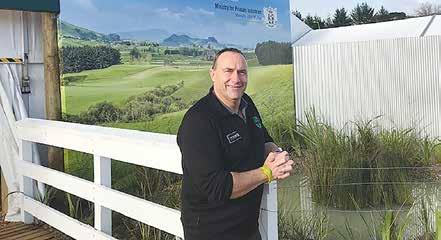
topics as wool and forestry.
MPI’s chief science advisor (and now the PM’s chief science advisor), Dr John Roche says their site was 50% bigger than it was last year and one that was designed to attract farmers to engage with a whole range of experts.
The site featured modules on farming for profit and highlighted issues around greenhouse gas
emissions and how close some of the mitigation tools are to becoming available.
“Every year these technologies seem to get two years closer and so it’s really topical to have conversations about these with farmers,” he says.
Also on the site was a module on gene technologies with LIC and AgResearch talking about the technologies that are going to come along that
will accelerate genetic improvement in cows and cattle.
Roche says also on the site was a team from Massey University who were focusing on climate resilience and showing some of the pasture species they are growing.
“This linked in nicely with the modelling that Pamu are doing on their farms around the country on what the climate may look in 2050 and how
they are planning their farms to be ready for this,” he says
One of features of the Science for Farmers site was the creation of two wetlands – one a normal one and the other a kind of riparian wetland. The purpose of these models was for staff from Massey University, DairyNZ and AgResearch to talk about some of the mitigation strategies that have been developed to reduce the impact of farming on freshwater.
Roche says there are a whole lot of options ranging from building detention bunds to the use of plantain to reduce nitrate leaching
He says the aim has been to highlight the need to balance productivity, profitability, environmental sustainability and future climate resilience.
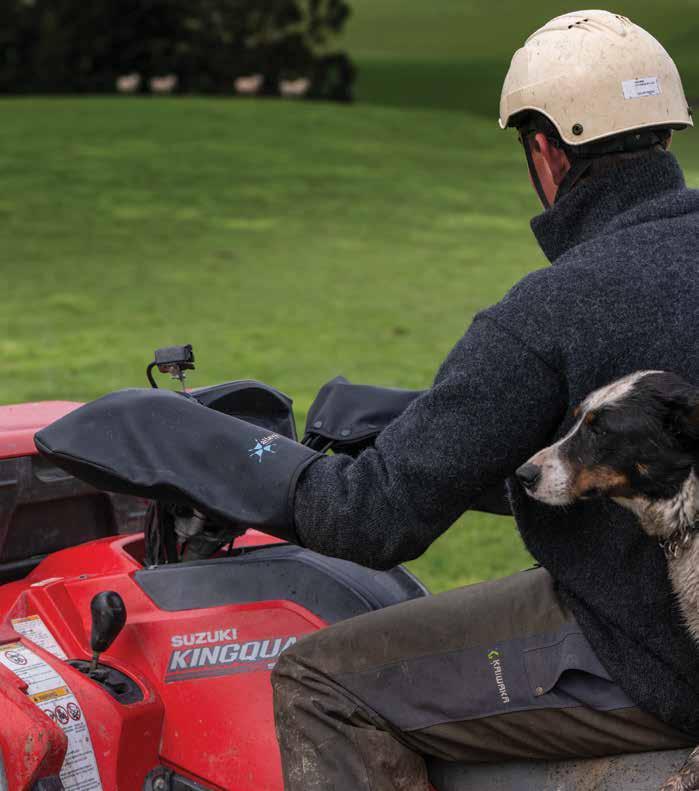
A SEVEN-YEAR programme, costing $17 million, will look at why pastures are not lasting as long.
DairyNZ analysis suggests pasture renewal rates are increasing as pasture harvest is declining – by 0.5 to 1 tonne of DM/ha per decade across Waikato and Northland.
The collaborative science and research programme – Resilient Pastures - was announced at Fieldays last week by Agriculture Minister Todd McClay. Government is providing over $8m towards the project.
Pasture is vital to the New Zealand economy. It provides a sustainable, low-cost feed source, underpinning the country’s competitive advantage in global markets and without action pasture persistence and productivity will likely continue to fall.
“This is one where we need to work together to ensure we can adapt and remain productive and sustainable in a changing climate,” DairyNZ chair Tracy Brown says.
“It’s a real concern for the country as a whole as it poses a threat to our pasture-based value proposition and to dairy as our biggest export earner. The solutions we discover and help farmers to adopt during this project will ultimately benefit all regions across the country.”
B+LNZ chair Kate Acland says pasture is the foundation of red meat farming systems.


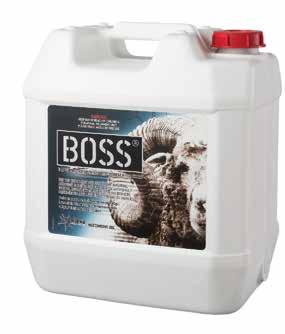
HORTICULTURE AND commercial vegetable growers in particular stand to be major beneficiaries of radical proposals by government to make sweeping changes to RMA regulations.
According to the Minister for RMA Reform, Chris Bishop, the RMA as it stands embeds a culture of ‘no’ and says this must change to a ‘yes’. He adds the planning system is broken and is a handbrake on economic growth and the cause of many challenges across the economy.
Proposed changes include changes to the
National Policy Statement for Freshwater, (NPS-FM) with local councils given greater flexibility to balance environmental goals with economic impacts. It would also see the removal of unnecessary consents for practices such as crop rotation and enable commercial domestic vegetable growing and support long-term water security by enabling water storage. It may also spell the end of the controversial concept of Te Mana o Te Wai.
HortNZ chief executive Kate Scott says the Government’s policy will support New Zealanders’ access to locally grown fresh produce. She says

it would offer some relief for commercial vegetable growers who have been living with uncertainty and unworkable rules and allow them to continue providing the healthy food we need.
“The Government’s
proposed changes to freshwater rules would provide for crop rotation and signals a future without resource consents for commercial vegetable growing. This will give growers confidence for the future,” she says.
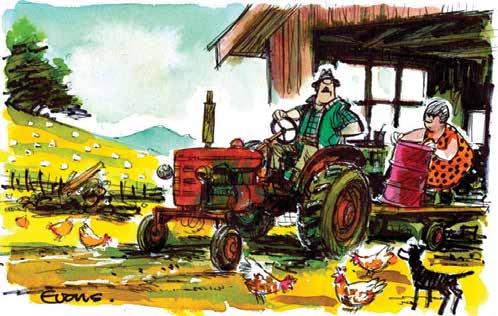
Scott says the proposal to remove regulatory blocks for creating water storage is good news.
“The Government has listened to growers’ concerns and these proposals will help ensure that
growing food in the right places remains possible -- without compromising environmental outcomes,” she says.
Beef + Lamb NZ says it’s pleased with some of the proposals saying some are hugely problematic for sheep and beef farmers. Chair Kate Acland says they have been calling for changes, particularly in the freshwater regulations, for some time.
She says they are pleased that the NPS for FM is being looked at because it is currently complex, often impractical and focused on unachievable numeric limits rather than the health of ecosystems.
“B+LNZ is analysing the options in the consultation materials and will provide further information to farmers on the consultation, including opportunities for input, over the next few weeks,” she says.
DairyNZ chair Tracy Brown says the current rules are impractical and unworkable, and welcome the commitment towards a more balanced and inclusive approach. She says the rules should be focused on delivering on outcomes, not just input controls, and aimed at specific ecosystem and human health outcomes, not just numerical targets, to best deliver on catchment objectives.



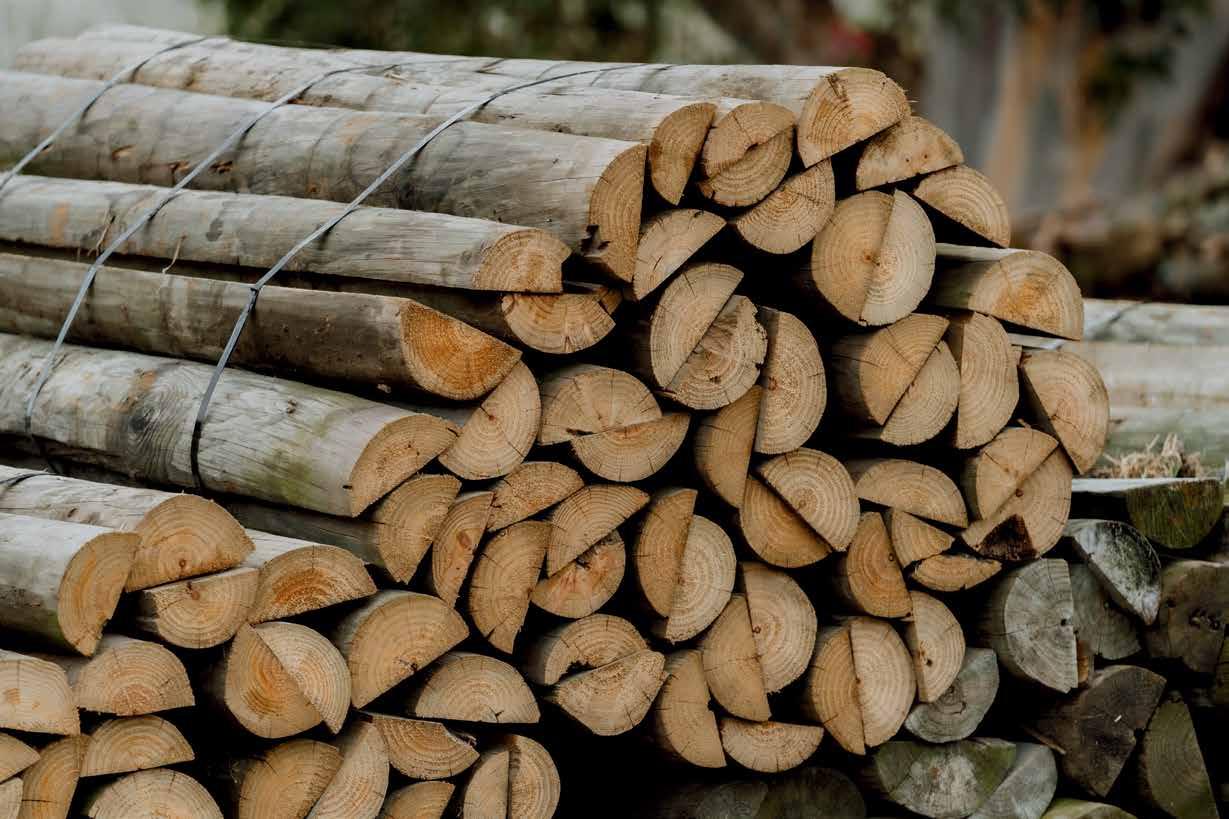
IT’S TIME to start talking up science again, especially as a career for young people. That’s one of the key messages from the Prime Minister’s new chief science advisor, Dr John Roche.
In an exclusive interview with Rural News, he says that science is a great career for young people and there is a need to engage with them to share the passion and benefits of being a part of the great science sector.
Roche says older scientists need to start talking up the profession because no young person wants to work with someone who is constantly talking it down.
“We need to involve the Gen Ys and Gen Zs of the world because they don’t want to be tied to a desk for 40 years before they retire. They want variety in their lives, they want to be given opportunities, they want to be able to travel and do different things,” he says.
Roche says having young people around keeps the older scientists young. He says a real joy in his life as an academic was dealing young people. He says the challenge is to create opportunities for those young operational minds of critical thinking.
“How we capture that intellect into science and create those hybrid models is something I would like to explore,”
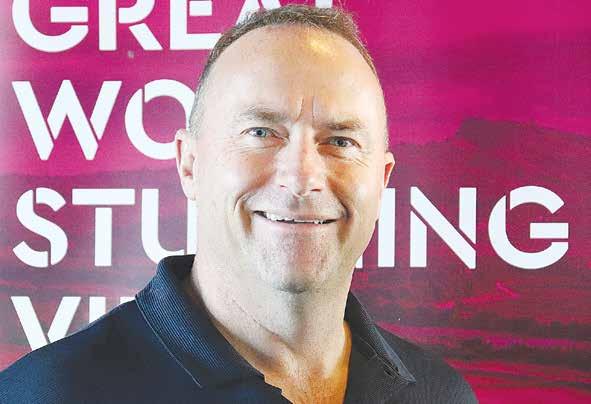
he says.
Roche says his own career evolved to where it is today because of the opportunities he was offered along the way.
Roche is modest about his qualifications for taking on the role.
He says when he was first told he had the job, he wondered if he was something of an impostor, but on reflection concluded that he was up for the job.
He describes himself as an inherently curious individual with a true passion for science. He likes to ask questions of people more intelligent than himself.
Roche was born in County Kerry, Ireland, but has spent the last 25 years in New Zealand. He is currently the chief science advisor at MPI and
SINCE HE was appointed to his new role, John Roche has been meeting with science leaders in NZ and overseas.
For example, he recently met with Ireland’s new chief science advisor, Professor Aoife McLysaght, who expressed a great keenness to work more with NZ.
Roche has important, established networks and contacts worldwide and an entrée to top people in governments and the private sector.
will retain that role, as his new appointment, while incredibly important, is only part time.
He has a PhD in animal nutrition, a master’s degree in farm systems and previously worked for DairyNZ but has worked in numerous other roles in other countries. He is unashamed about his passion for agri-
“That international experience built up over time is a big advantage,” he says.
At home, he has meetings with officials from MBIE and leaders in the new CRI restructure. He says they are all up for the challenges and he believes there is an appetite right cross the public sector science spectrum to make the changes work.
“This is so exciting and I have a front row seat to watch this happen,” he says.
culture.
“I am an ag person. You can take the boy off the farm, but you’ll never take the farm out of the boy,” he says.
But that is only part of his story.
Roche has worked right across the science spectrum with biomedical scientists, immunologists, physicists and


JOHN ROCHE says while the light is shining on agriculture, NZ needs to increase productivity in a sustainable way – a task he describes as difficult.
He says it will require innovation, out of the box thinking and a whole range of people from different disciplines working together – not just agricultural scientists but engineers, chemists, ecologists and a whole lot more to produce the required multifaceted solutions.
In terms of science leadership globally, Roche says NZ country has a proud history of science and innovation going back over more than a century. He says, for example, that NZ was the first country in the world to dry milk and export it the four corners of the globe. He notes the great work that Fonterra is doing today in terms of producing a huge range of milk-based ingredients.
“Take Sir Peter Jackson. He revolutionised the filmmaking industry with technology that was developed in NZ; Xero did the same for the accounting industry and Sir Peter Beck has done the same in the space industry – all this from little old New Zealand,” he says.
Roche says NZ is a world leader in many aspects of science but he acknowledges that there will be areas that other countries will be surpassing us. The plus for our country is that we have a track record of being a great collaborator and we don’t have to replicate what everyone else is doing.
“We can just work alongside them and take advantage of what they are doing and also help them. I have never met a scientist in the world who doesn’t want to talk about the work they are doing, and to explain how they have come to that conclusion,” he says.
The key, says Roche, is to tap into those global networks and use them to our advantage.
modelers. He’s also run his own consultancy businesses, worked in others overseas and has experienced the ups and downs of business life.
“So, bringing science to impact is a true passion of mine and I think that is one of the key reasons why the Prime Minister asked me to step into this role,” he says.
He says while NZ science system has done well, it hasn’t been as impactful as it could be, and he hopes to see the emergence of more commercialisation. He senses a shift in this area and believes that the restructuring of the science system now taking place will mean that NZ will become a more marketable option for investors. He says he’s already had a venture capitalist talking up the changes.
“Yes, we need more money, but it doesn’t necessarily have to come from government and there is a need to draw it from other places. I think our structure will help us do that; so will prioritising key research areas.
“And getting out there and highlighting the brilliant science that we do in NZ will ensure that people will see us as great place to invest in science and technology,” he says.



shy from the highs of number of years ago,” Siebert told Rural News.
AVOCADO GROWERS
are reporting a successful season, but some are struggling to keep their operations afloat following years of bad weather.
New Zealand Avocado chief executive Brad Siebert says the good news was that Australia was able to take a significant portion of the export crop along with new markets in North America and existing ones in Asia.
This meant that growers who had a reasonable packout were rewarded with some reasonable returns, he says.
“I say reasonable because the returns are
“We still struggled with packouts due to several weather events - not as extreme as cyclone Gabrielle, but which really downgraded the fruit. The average industry packout is around 50% - but remember this is an average and some growers have been below 35% due mainly to the effects of Gabrielle while other have packout rates of between 80% and 90%,” he says.
Siebert says they would like to see the industry average up around the 60 to 70% mark which it was in the past. But he says to get
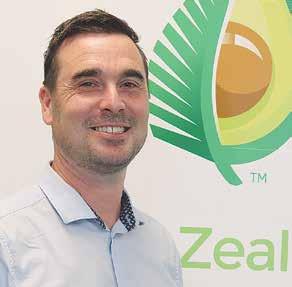
this, all the stars must align and that includes have good crop protection and kind weather.
He says they were hoping for what he called ‘cleaner fruit’ meaning undamaged but
notes that Cyclone Tam, which struck over Easter, resulted in fruit being affected by the wind causing some cosmetic damage to fruit in especially in Northland. He says this will see some
fruit downgraded.
While for some months Northland was facing a severe drought, in the last few weeks it’s been hit with heavy rain which has resulted in water lying in orchards.
Siebert says the avocado is a shallow rooted tree and unless the water drains away quickly it can affect tree health.
“The trees that aren’t well drained just sulk and the water has the potential to cause long term tree health, so growers must actively manage that. As an industry we are just trying to support them as best we can with resources and helping them to manage the cleanup,” he says.
REFLECTING ON last season, Brad Siebert says it was something of a relief to see growers who had export crops being rewarded with reasonable returns. He says for the sector it validated the discussions that were held with lenders and banks around the specific climatic reasons that saw a drop in returns.
“But we are now able to show that when the weather plays its part, the industry is able to rebound from those weather impacts and sell fruit at value in our key markets,” he says.
While things are looking up for the coming 2025/26 season, for some growers the problems are far from over.
They have had negative cash flows for the past two years due to cyclone Gabrielle and they are being severely challenged to remain in business even with the better returns of the past season.
In horticulture we live in a world of biology, says Siebert noting there are things that growers can and can’t control. He points to tariffs, market access and weather and things that growers can’t control.
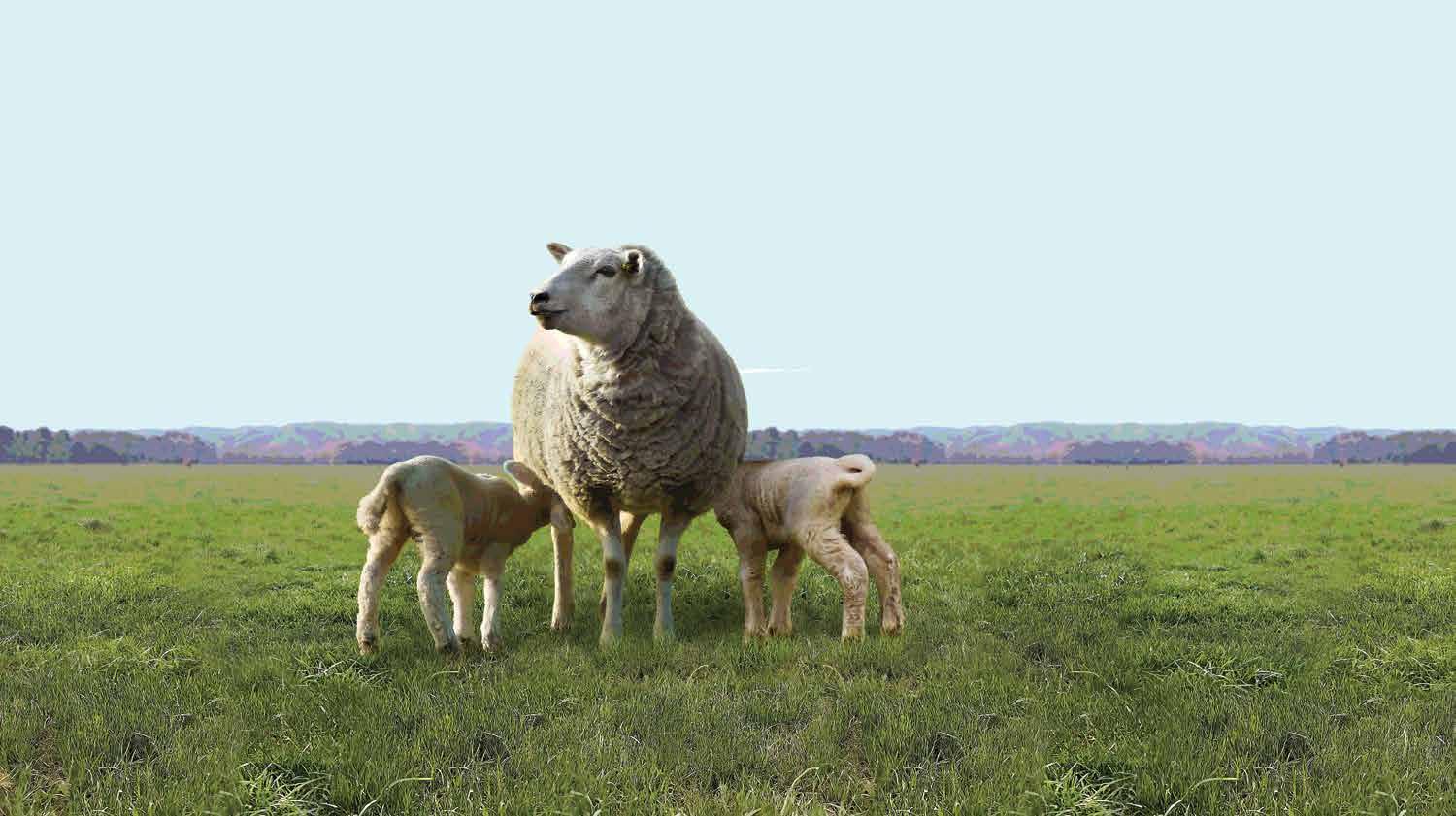

THERE IS an appeal to New Zealanders to buy local citrus fruit.
It comes from the chairman of Citrus NZ, Ian Albers, who says a key challenge for NZ growers is competing with imported citrus, mainly from Australia which arrive on the market at about the same time as local fruit.
About 98% of the citrus grown in this country goes on the local market with just a small quantity being exported – mainly lemons going to Japan and the USA and several other small markets.
“I think we produce pretty good citrus here and so we really want consumers to get behind that and make sure that they support us,” Albers told Rural News.
According to Albers, overall, this season is looking reasonably good. He says the previous few years have been challenging with Covid, Cyclone Gabrielle and continuing wet weather which has impacted on things such as tree health. But he says 2024 produced a good spring and there have been pretty good
growing conditions in the two main citrus growing regions – Kerikeri and Gisborne.
“In the case of Gisborne, we had a good spring and then a good early summer period right through until boxing day. Then it was a bit cooler and wetter than what we would have liked but overall, it wasn’t too bad. From what I have seen out in the district, fruit size and quality look good and we are seeing some good flavour in the mandarins which we have just started harvesting,” he says.
Albers says in the case of Kerikeri, they were dry right through the summer until recently and they had a particularly heavy crop last year. He says the satsuma mandarin crop there will be slightly down on last years but points out that that citrus can be little bit biannual and have a big crop one year and lesser crop the next year.
He says the harvesting season usually starts off with limes in February and March, but the big harvest is the satsuma mandarins.
“Overall, despite the regional differences, I think the citrus crop will be slightly up on last year.
IAN ALBERS says getting innovation into citrus packhouses has challenges because they must pack multiple and quite different fruits of differing shapes and sizes. He says it’s easier for the kiwifruit sector to increase innovation because those packhouses are just packing a single fruit which is uniform in shape and size.
“In the case of citrus, we have everything from grapefruit, lemons, limes and mandarins which all have their own idiosyncrasies in terms packing and grading. Our industry is simply not big enough to have single packhouses for one of these fruits,” he says.
But Albers points out that in packhouses in some of the larger citrus growing regions in the world such as Australia and USA, it is possible to have dedicated packing systems for specific citrus fruits.

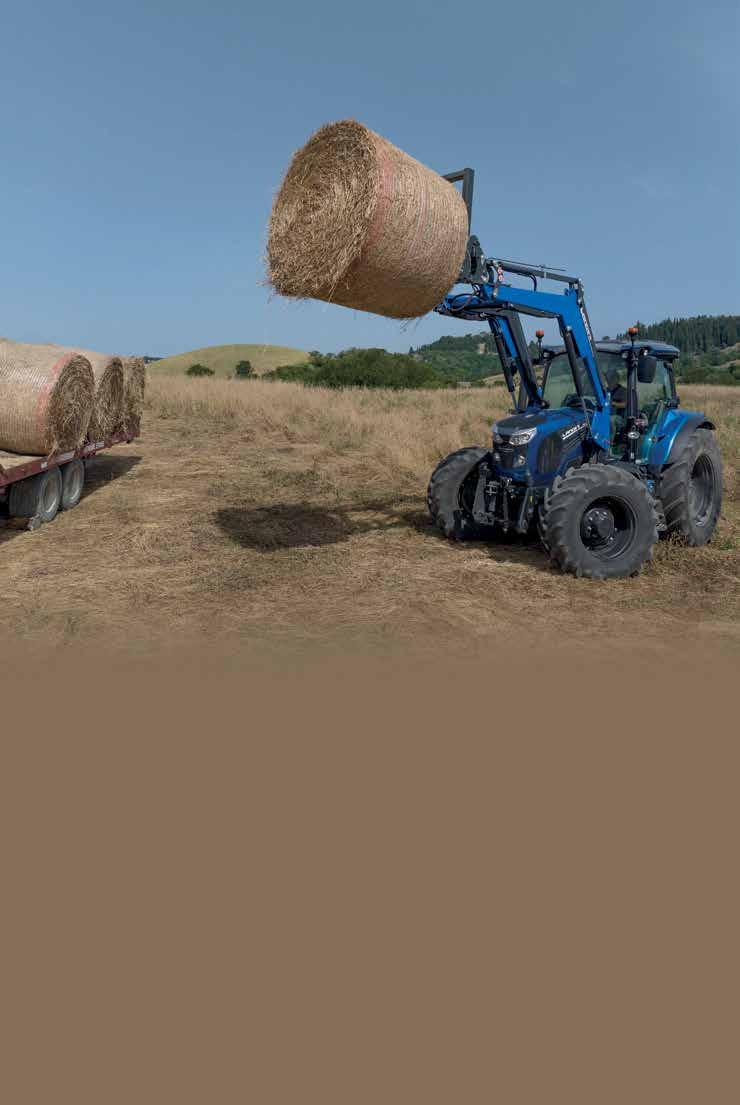

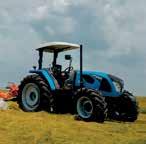
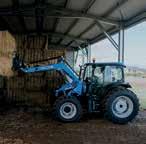
Zealand farmers will be asked to know their greenhouse gas (GHG) number. There are a vast number of GHG calculators available, all giving a different answer and none of them allowing for your pasture to be viewed as a CO2 ‘sequesterer’.
Apparently, farmers need to know their GHG number so they can show that they’ve reduced this number, as per regulations about to be imposed on them by the Government, banks, and meat or dairy companies. Make no mistake, the farming tax hasn’t gone away; there are many people set to make a lot of money out of you by asking the GHG question. In true corporate fashion, they will at first call it a premium, then it will slide into a penalty if you don’t play their methane mitigation money game.
Various unnecessary options to reduce your GHG number range from using less fertiliser (already happening), replacing stock with
trees (already happening), incorporating low methane genetics (animals that prefer to selectively graze - good luck with that) or using one of the new biotech “tools” that taxpayers have unknowingly contributed towards.
Surely NZ farmers deserve to know what the problem is in the first place before signing up for extra costs and regulations in perpetuity.
This is where it gets interesting.
CO2 makes up 0.04% of the atmosphere. The majority of CO2 in the atmosphere is of natural origin. This natural CO2 is primarily released through processes such as ocean outgassing, soil respiration, and volcanic activity. Human activities contribute only about 4%. NZ contributes 0.17% of all human global emissions.
We are also told by alarmists that methane heats the planet more than CO2 does. It cannot add to warming if levels are stable or decreasing (as ruminant methane is in NZ).

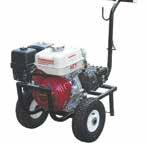



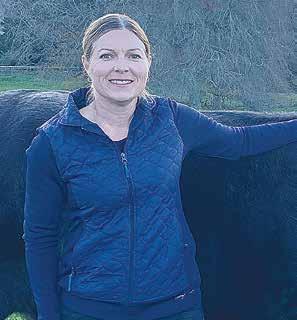
If we are to serve a lifetime sentence, surely we need to define the crime. Professor David Frame has modelled that NZ ruminants may produce (at worst) 4 millionths of a degree C warming per year. This equates to an immeasurable amount. It would take 250,000 years to contribute 1 degree C of warming. How and why would you reduce something that is immeasurable to begin with?
This is why the ‘climate industrial complex’ likes to focus on ‘emis-
sions’ instead of ‘warming’. During the past decade, millions of dollars has been spent researching and funding biotechnologies that can be sold to farmers to reduce their GHG emissions number, even though technically there will be no reduction in
global warming temperatures whatsoever. When the immeasurable amount of warming (4 millionth of a degree C) is highlighted to those people shouting ‘we must reduce emissions at all costs’ (the National Party, AgriZero bureaucrats, levy groups, banks, certain meat companies and dairy co-ops), they are not interested (even though you would think they would have done some due diligence before squandering levy and taxpayer money on misguided pills and potions).
To quote AgriZero upper management, “With regards to the global temperature decrease expected from this bolus, we do not target the actual amount of warming produced by New Zealand ruminants per year.”
AS ELECTRICITY prices soar, farmers appear to be looking for alternative energy sources.
According to a recent report from ASB Bank and energy transition charity Rewiring Aotearoa, 66% of farmers surveyed said they wished to make the transition to solar power but were unable to.
The report states that the key barrier to the adoption of solar for many farmers is its cost, with 60% of those surveyed saying they had land that could be used without reducing production.




Now, ASB is launching a new loan product specifically targeted at those farmers wanting to make the switch.
The ASB SMART Solar Loan launched last week, with five years’
Wait a minute? Surely this is another way of saying we are wasting taxpayer and ag sector money just to look like we are “doing our bit” towards the emperor’s new clothes. At a cost touted at $100/cattle beast/year for a needless bolus, anyone would think our sector had time, labour and money to throw away (that’s a billion bucks on boluses per year by the way). To forge ahead with expensive plans to reduce ruminant emissions seems fiscally farcical in a country that has a second-world health care system at best.
You will note that the boffins run for the hills when you ask them what difference this will make to global temperatures and their well-trodden lines of “it’s to protect our global markets” or “we have to play our
interest free on up to $150,000 for solar and battery systems.
ASB general manager rural, Aidan Gent says there are multiple reasons why the bank believes now is the right time to launch the loan product.
“The energy sector in terms of solar and batteries has probably reached a tipping point around the cost of panels and cost of batteries,” Gent told Rural News
“It’s far more affordable to put them on farm than it was a year or two ago.”
Gent says the rise in electricity prices and a lack of energy resilience have also influenced the decision to launch the loan.
“We think it’s the right thing for our farmers in terms of their own
part” gets rolled out. Telling them to ‘find a country that does it better’ would end that line or argument.
Isn’t it time that our leaders showed some courage and said no to this virtue signalling nonsense? NZ’s contribution to warming is immeasurable and your share of immeasurable is (strangely enough) also immeasurable.
Therefore, when your bank manager, levy body, dairy or meat company demands that you ‘know your number’, ask them to validate what global temperature decrease we can expect from using their myriad of miscalculation matrixes and interfering with our low-input farming systems through.
• Helen Mandeno is a dry stock farmer from South Waikato and a member of the Methane Science Accord.
on-farm costs and their own energy resilience, but it’s also a great story for regional New Zealand as well if we can accelerate the electrification,” he says.
Gent says the hope is that the 0% interest rate on the loan will help to remove the capital issue as a barrier to accessing solar energy for farmers.
The bank has worked with Prism Earth to develop a series of online interactive tools to assist farmers in seeing the benefits of solar power for their farm business. The ASB SMART Solar Loan is available to farmers now and the interest free offer will be available for new and existing ASB customers until 15 December 2025.
– Jessica Marshall
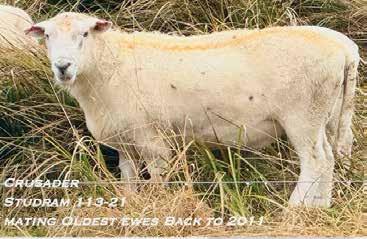

DURING MY last recess break, I got around the country and met with many farmers and growers from Hawke’s Bay, Wairarapa, Manawatu, Marlborough, and Canterbury. It was a good opportunity to see and hear about good work that is being done with pest control, in catchment groups, and other good stuff happening out in the regions.
But there was also a huge sense of frustration from many about issues with local government, particularly regional councils and their implementation of regional plans.
These issues included heavy handed, and often pedantic, enforcement of rules - the classic example being the farmer who
had the police show up with the council, because he had constructed a wetland. Seriously!! That’s way over the top.
Other issues were frustration around a push to stop gravel extraction on some of the many gravel beds that are building up beside rivers, creating flooding risk.
Yet, apparently, it’s all good to dig a hole on the other side of the river boundary fence and destroy a perfectly good paddock to get that gravel, or truck it in from further afield, adding cost to roadworks. This is hardly smart for the environment, or the wealth of the nation.
Consents were a big issue for many, with a mixture of consent renewal issues. In several cases I heard that renewals were just not being
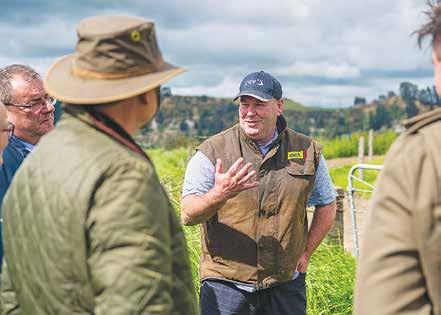
issued for unknown reasons, and for a small group of extensive farmers they were facing the risk of being placed into a highly costly notified consent, just so they could carry on farming. The costs that some of these landowners are being put
through is eye watering.
In many of these instances I was able to point out the changes that are coming that will make life so much easier for these farmers. There were issues raised that gave me some thoughts as to how we could make
things better and ensure that our changes will have the desired effect.
However, there was a challenge - how do we get through to the “promised land” from the swamp we are in now? For some landowners, they are in situations where just put-
ting their heads down and waiting for a year just isn’t an option. They may well need to refinance, or they are at that stage where it’s the right time to move on.
In that situation, where you are operating without a consent or potentially going through some crazy council process, this creates a major challenge and stress. Is any bank going to be willing to refinance with such uncertainty? Or is any potential buyer willing to purchase, again, with so much uncertainty?
I know that many of you will think - well can’t you just tell the council what to do, can’t you just change the rules? Well yes, we can and yes, we already are, but we must go through a process and that takes time. We are moving as fast as we can
through it, whilst ensuring that we have quality legislation at the end of it that doesn’t lead to even more uncertainty.
The importance of local government elections cannot be overstated. Unfortunately, voter turnout is often pretty low, and many people vote based on whose name they recognise, rather than on a candidate’s ability to make a difference. It is crucial for people to vote and make their voices heard because the decisions made by councils directly impact our communities. Getting involved in local elections is essential for to you to get a council that will work for rural communities.
• Andrew Hoggard is Associate Minister for Agriculture.













TWO REPORTS out last week confirm that the worst may be over for pastoral farmers.
The days of rampant on-farm inflation and depressed prices – especially for sheep farmers - may be a thing of the past. For red meat farmers, prices for farm inputs fell by 0.6% in the year to March 2025 after a 30% increase in prices since 2020. Deflation is an infrequent occurrence for farm input prices and a welcome respite for red meat farmers following a 30% increase in prices since 2020.
Beef + Lamb NZ’s annual on-farm inflation report puts this down to mostly due to lower interest rates, plus modest decreases in input prices such as weed and pest control, fuel and fertiliser, lime, and seeds.
A second report- DairyNZ’s View from the Cowshed – reveals that dairy farmers are feeling proud and increasingly positive about the future of their sector.
Most dairy farmers indicated they feel the outlook will remain positive for the sector over the next three years, with less farmers feeling that things will decline (21.1%) than those who feel it will stay the same (51.8%) or improve (27.0%).
The findings paint a picture of a sector that is passionate, resilient, and progressive.
While dairy farmers are enjoying record farmgate milk prices, the same cannot be said about sheep farmers. However, lamb and beef prices are on the rise. Farm-gate prices remain strong, and the outlook is relatively good.
This is a positive change from recent years, when high on-farm inflation eroded profitability. There’s also good news on interest rates. Farm lending rates are expected to ease further through 2025 and remain stable into 2026, providing further relief on debt servicing costs.
However, challenges remain – regulatory compliance impacts, farm conversions especially sheep and beef properties into forestry and the risk of global shocks.
Having said that, farmers are out of the woods and in a better space than they were a few years ago.
Overall, farmers have grounds for optimism and that augers well for the primary sector and New Zealand as a whole.
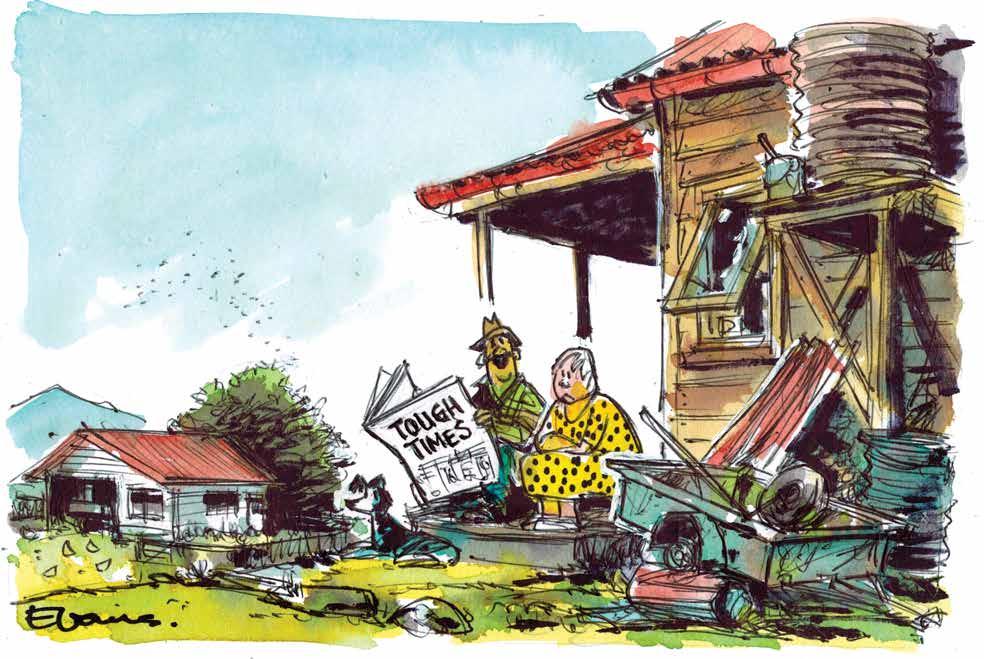
“Looking on the bright side – we started with nothing and we’ve still got most of it.”
THE ANTIPATHY the previous government had for farmers no longer holds court on the Beehive’s 9th floor, but it’s still alive and well in some ivory towers, judging by a recent missive from the self-styled ‘Integrity Institute’. Penned by a Dr Bruce Curtis, “formerly” a sociology professor at Waikato University, the title ‘Corporate Welfare for Agribusiness’ telegraphed which way he was going to screw the scrum. Using the KPMG ag report as a springboard, Doc Curtis unleashed every cliché in the book: farmers making a profit was “farming privilege”; and the removal of impractical red tape was “regulatory capture in action”. And the Hound’s favourite sneer, “agribusiness is very focused on its bottom line”. That’s right doc, farming is a business! And it’s described as “the backbone of the economy” because that’s exactly what it is.

MISSED OUT on a knighthood in the King’s Birthday Honours, again? Don’t worry, the state broadcaster RNZ has someone who can help. The other week, Paddy Gower did a much-publicised interview with Jim Bolger on the great man’s 90th birthday. Jim Bolger, ever the gentleman, did not correct the gushing venerable Paddy boy who throughout the interview referred to the former PM as ‘Sir Jim’. Well Paddy, this old mutt plans to send you a library card so that you can read about the fact that Jim has forever refused a knighthood, due probably to his strong Irish roots, which he is deeply proud of. But if anyone is missing a knighthood, perhaps call the King’s own Paddy Gower and he can confer it on radio.
EDITOR-AT-LARGE: Peter Burke Ph 021 224 2184 peterb@ruralnews.co.nz
REPORTERS: Nigel Malthus Ph 021-164 4258
HEAD OFFICE POSTAL ADDRESS: PO Box 331100, Takapuna, Auckland 0740
Phone 09-307 0399
PUBLISHER: Brian Hight Ph 09 307 0399
GENERAL MANAGER: Adam Fricker Ph 021-842 226
EDITOR: Sudesh Kissun Ph 021-963 177 sudeshk@ruralnews.co.nz
Leo Argent
MACHINERY EDITOR: Mark Daniel Ph 021 906 723 markd@ruralnews.co.nz
PRODUCTION: David Ferguson Ph 027 272 5372 davef@ruralnews.co.nz
Becky Williams Ph 021 100 4381 beckyw@ruralnews.co.nz
DID FORMER PM Jacinda Ardern get fawning reviews for her book? Not so much. One local reviewer quips the book “is written with the American market in mind… and aimed at a particular kind of young, liberal, educated American idiot eager to drink the Kool-Aid that Ardern goes around dispensing in her various meaningless roles in the US as an ambassador of kindness”. Ouch! Did she admit mistakes around Covid? Not according to reviewer #2: “The closest thing I found is on page 309, where she admits that she made ‘imperfect decisions’, but that’s really underselling the massive balls-up that was our Covid response.” One Ardern anecdote suggests some self-awareness though. A lady approached her one day. ‘I just wanted to say thank you,’ she said. There was a beat before she added, ‘Thanks for ruining the country.’
AUCKLAND SALES CONTACT: Stephen Pollard Ph 021 963 166 stephenp@ruralnews.co.nz
WAIKATO & WELLINGTON SALES
CONTACT: Lisa Wise Ph 027 369 9218 lisaw@ruralnews.co.nz
Want to share your opinion or gossip with the Hound? Send your emails to: hound@ruralnews.co.nz
ACT MP Mark Cameron isn’t everyone’s cup of tea, but he certainly calls it how he sees it, holding nothing back when ‘climate scientists’ had a crack at Kiwi farmers recently: “A cabal of academic bozos from countries who don’t know how to farm without subsidies have accused New Zealand of an ‘accounting trick’ because we’re not waging war on cow burps. Putting aside the fact methane is a short-lived gas, international climate scientists should be thanking Kiwi farmers because we feed the world more efficiently than anyone else. Declaring war on methane here at home would mean less dairy and meat produced in New Zealand, but it wouldn’t change global demand. Hungry households in China and the US would just turn to other less-efficient countries for their baby formula and ribeye.”
SOUTH ISLAND SALES CONTACT: Kaye Sutherland Ph 021 221 1994 kayes@ruralnews.co.nz
DIGITAL STRATEGIST: Jessica Marshall Ph 021 0232 6446
I RECALL reading some interesting stuff way back that offered different ways to reduce stress.
I’m sure most of us know ongoing stress is never a good thing. What is also well known is that too much of this stuff brings serious health issues to the fore.
There may be times you have to ‘burn the candle at both ends’, but you simply cannot keep doing that. Yep, pay day always seems to come!
Now, as I recall, some research gurus and other experts in their field came up with some helpful tips because of their studies, to help people properly unwind. So, I offer these as a few helpful suggestions in my column today.
In brief, one of them said: when you are taking a breather, a few days break, or a holiday even, don’t take your office with you. By that, they meant your office tasks, perhaps on your laptop or your phone, or a folder full of work-related things to get done while you are on ‘holiday’. For those in the rural sector, the ‘office’ will be your farm, and any dramas that could be happening there at that moment.
Physically you may be ‘out-of-town’, but in reality, you’re still very much

else. We didn’t come cut out from a ‘cookie-cutter’, so the answers won’t come that way either. The trick is to find what actually works for you. Something that positively distracts you.
For us, we currently own a serious motorcycle. So, getting away on a ride for a night is one
at the ‘office’! You still make and receive work related phone calls, and your mind is still plugged into the ‘office’, whatever that may mean for you. All you have done is change your geographical location.
When that’s the case, then most likely you’ll get back home more stressed, and even more tired than when you left.
Additional helpful tips included suggestions for more short ‘time-out’ options. Activity like a hobby, a sport, getting out for a meal, or even things like volunteering for something, were options to consider. The nitty-gritty bit was that the activity needed to be something that fully captures your attention. The big plus is that it gets your mind off the job for a few hours.
As we are all different, what works for one may not cut it for someone
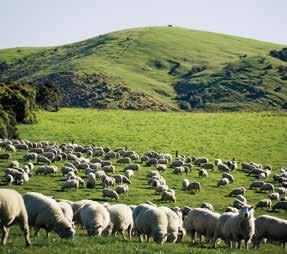
thing that works for us. With 1700cc throbbing underneath us, my mind is most definitely on the ride, not on a bunch of other stuff!
Fishing used to do it for me too. But a major change of location has us living a couple of hours from either coast now, so it’s not as readily accessi-
ble as it used to be.
And then there is always family and good friends. We recently had our youngest grandchild with us for eleven days –quite the distraction from our ‘normal’ would be one way of putting it!
Living in the city, the farm life offered him a whole new world to expe-
rience. At just 18 months old, he came to the farm with his very own pair of Red Bands. Well, the little guy absolutely fell in love with those gumboots. It was fun to watch.
The great value of having true friends is definitely in the mix for me as well. As Thomas Aquinas said centuries ago:
“There is nothing on this earth more to be prized than true friendship”. For me, and many others like me, we have a real faith. True friends have come with that, with a Friend like no other top of my list. God bless.
• To contact Colin: farmerschaplain@ ruralnews.co.nz
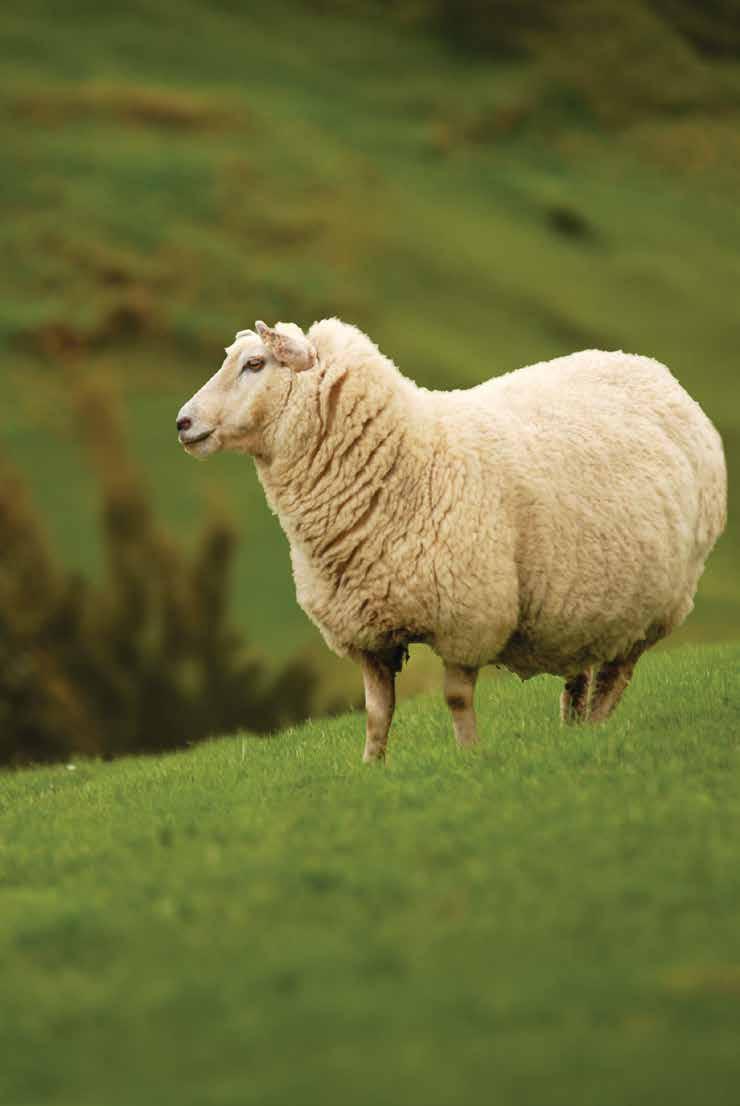




TWO YEARS on from Cyclone Gabrielle, I’ve learned that while the power of Mother Nature is formidable, it is more than matched by the extraordinary capacity of locals to recover and rebuild.
Not long after the cyclone, I flew into Hawke’s Bay Airport, and while passing over Eskdale and Bay View, I was stunned by the devastation visible from the window.
All across Heretaunga, Te Tai Tokerau, Te Tairāwhiti, Tararua and Wairarapa, the impact of the storm was not only physical, but also been emotional – communities were isolated, demoralised, and set back years, financially.
I joined Kelston Orchards owner Tony
Harington on a walkthrough row after row of his silt-flooded apple trees. What really struck me was his deep fear the trees may not sprout in the coming season – the kind of worry you don’t shake off.
First came the disaster, followed by what could potentially be a catastrophic financial blow to his business.
Tony’s story was just one of thousands – many of our staff had also been affected by the storm –and we recognised the urgent need to step up and support the community.
Our response needed to be swift but also considered. ANZ pledged $3 million to aid recovery efforts.
We wanted to donate these funds directly into the affected communities, where the money would

have the greatest impact, rather than relying solely on larger disaster relief organisations.
The funds were ready to help but with much of the infrastructure gone, there was no clear path to get it where it needed to go.
We set about partnering with reputable and established organisations which had a demonstrated need for funds and the capability to
deploy resources quickly to those that needed them most.
It became clear that local, regional organisations were best placed to do this, as they have an intimate understanding of their regions, and their unique challenges.
ANZ’s donations to various iwi, rural schools, and primary sector groups, along with The Red Cross Disaster Relief Fund, helped provide
immediate relief - care packages, food, water, fencing, farm equipment, and generators.
Additionally, they supported mental health and wellbeing facilitators, temporary housing, educational support, and community events.
The donations to iwi were particularly effective, as they had in many cases been first responders to their communities, which gave them a strong understanding of the most urgent requirements in their rohe.
Another notable recipient of our funding was Hawke’s Bay’s Evergreen Foundation.
Evergreen’s efforts in delivering assistance to isolated communities, supporting education for isolated families, and running mental health advice forums have been outstanding.
Similarly, support from the Hawke’s Bay Horticultural Advisory Group, in partnership with the Hawke’s Bay Fruitgrowers Association, has been crucial in helping the fruit and winegrowing sectors recover faster.
Those industries are looking more promising this year, with the size and quality of fruit said to be fantastic due to the warm, dry conditions this growing season.
It’s a welcome relief not only for the businesses themselves, but for the many families which also rely on these industries for their livelihood.
Stats NZ reports that Hawke’s Bay’s GDP rose by 5.6% in the year to March 2024, which was above the national average of 5.44%, but the economy is currently nav-
igating a complex recovery path, not only from Gabrielle, but also due to broader national economic challenges.
To help chart a new path forward, ANZ also partnered with the Evergreen Foundation for an event on May 16 in Hastings – Growing Our Future – which aimed to foster discussions around the next steps for Hawke’s Bay’s economy, and how it can return to growth.
The lessons learned from Gabrielle will have been wide-ranging and, in many places, harsh.
But the main lesson I’ve come away with is simple – during times of crisis, donations can have the most impact when locals are empowered to help themselves.
• Antonia Watson is the chief executive of ANZ.
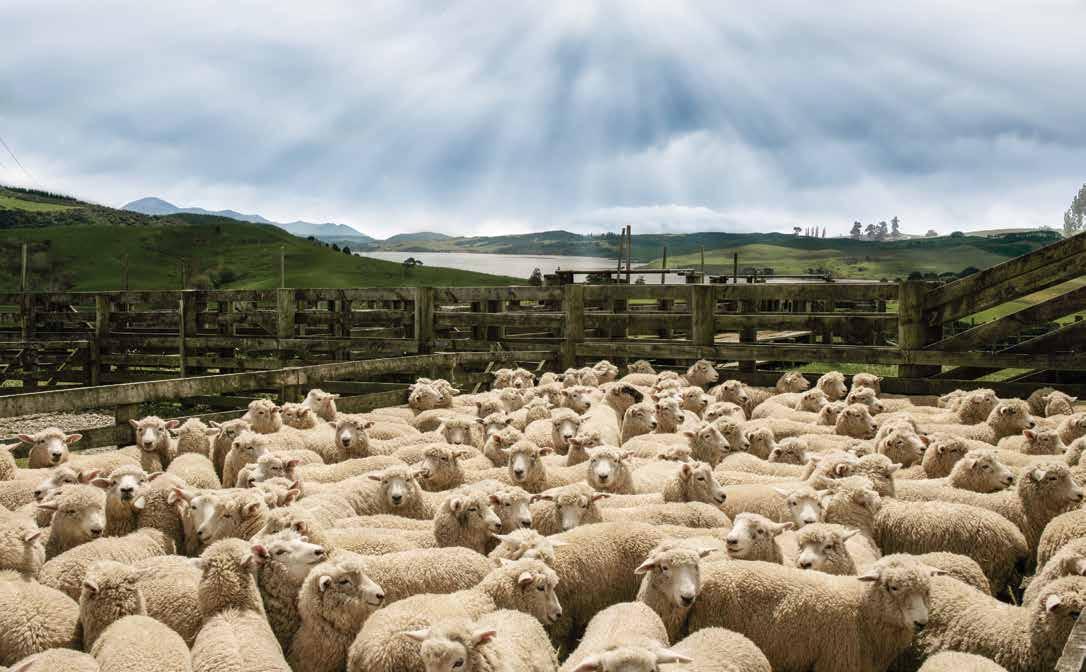


of 85 to 115 days.
ONE OF New Zealand’s latest and largest agrivoltaics farm Te Herenga o Te Rā is delivering clean renewable energy while preserving the land’s agricultural value for sheep grazing under the modules.
The converted dairy farm, situated along the border of the Waiotahe River in the Opotiki District, is a joint venture between Trinasolar, a global smart photovoltaic (PV) and energy storage solutions provider and Lodestone Energy.
Construction of the 71,000+ module utilityscale solar farm began in December 2023 and achieved first generation in December 2024, with the project’s construction progressing faster than anticipated. This was due, in part, to the ongoing partnership between




module supplier, Trinasolar and Lodestone. As the third agrivoltaics project developed together, ongoing collaboration enabled the refinement of construction processes.
Incremental improvements in small and repetitive installation tasks translated to large efficiencies at scale—significantly accelerating the construction schedule.
Once fully operational,

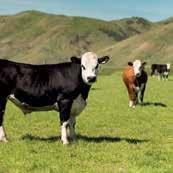
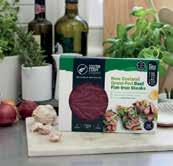
the 42MWp farm will generate 69GWh of clean energy annually, enough to power nearly 10,000 homes, and is the first solar project in New Zealand to feed directly into the grid.
Like Lodestone’s other farms, Te Herenga o Te Rā, plans to integrate sheep grazing beneath elevated solar modules, allowing livestock and renewable energy produc-
tion to coexist. The elevated panelling design provides shade for sheep during warmer months, reducing heat stress, while their natural grazing controls grass growth under the modules— reducing maintenance costs, herbicide use, and machinery emissions.
Lodestone Energy plans to reinstate the necessary infrastructure to support livestock,

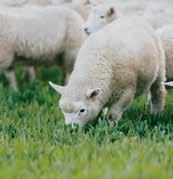


Kohira, which gave me a unique perspective on the project from the ground up. Through this work, I became aware of the opportunity to trial grazing under the panels and was keen to take it on,” he says.
“Since then, I’ve seen firsthand the benefits of agrivoltaics for both the land and livestock.
including new yards and fencing, before welcoming the next grazing lessee to Te Herenga o Te Ra later this year.
Connor Dent, grazing lessee and pastoralist of Lodestone’s first agrivoltaics project, Kohira, has found the experience overwhelmingly positive,
“As a civil engineer, I was directly involved in constructing Lodestone’s first solar farm,

The panels provide shelter, which has improved lamb survival rates, and we’ve noticed better grass retention through dry periods. There are some challenges, like managing fertiliser application and working the dogs when the panels are tilted, but overall, it’s been a positive experience. Seeing the project through from construction, to now farming on the land has been incredibly rewarding.”
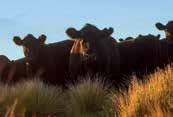
The latest project builds on the longstanding partnership between Lodestone Energy and Trinasolar, which has now seen nearly 200,000 Trinasolar modules deployed across Lodestone’s three operational solar farms in Kaitaia, Edgecumbe and the latest in Waitaohe.
Edison Zhou, head of Trinasolar Australia & New Zealand, says the farm is a standout example of how solar and agriculture can work together seamlessly.
He notes that globally, interest in agrivoltaics is accelerating, and Lodestone is at the forefront of delivering large-scale, dual-use projects.
“Their work is setting a benchmark for agrivoltaics initiatives worldwide, and we’re excited to be part of their journey.”

It’s time to reconnect and find out what we can create, together.
Join Silver Fern Farms at our Plate to Pasture Farmer Conference.

Creating goodness isn’t just about delicious red meat. It’s about building value from our produce, caring for our people and communities. It’s about looking after our wider environment and sharing nutritious red meat with consumers around the globe. Creating goodness is exactly what the world needs us to do, and we do it together, every day.
At this year’s Silver Fern Farms Plate to Pasture Farmer Conference, we’re celebrating Creating Goodness Together.
We’re hosting a lineup of industry leaders and expert speakers, plus the Boning Competition National Finals, and of course the Plate to Pasture Supplier Awards.
We’re inviting everyone who creates goodness with us - farm owners, managers, stock hands and shepherds; wise old hands and keen young guns.
Join us. Our conference is free to attend for all suppliers, shareholders and their teams.
BEEF+LAMB NEW Zealand (B+LNZ), in partnership with the Ministry for Primary Industries (MPI) and other sector organisations, has launched a national survey to understand better the impact of facial eczema (FE) on farmers.
The Social Impacts Survey is part of the broader Eliminating Facial Eczema Impacts (EFEI) programme— an industry-wide effort to reduce and ultimately eliminate the devastating impacts of FE on New Zealand’s livestock industries.
The social impacts survey forms part of the programme’s journey to understand FE and its effects on farmers. Other projects contributing to the understanding of
these impacts include the Sheep Poo Study, which is entering its third and final season. This study plays a key role in assessing the spread and severity of FE. Earlier this year, an economic survey illuminated the financial impacts of FE, and this social survey is equally crucial.
FE affects more than profit and on-farm productivity; it impacts farmers’ sense of purpose, self-worth, and relationships with their animals and families. B+LNZ says the human side of the story has been underreported.
“Facial eczema is a challenging disease to identify early and manage. It affects the animals but also impacts their caretakers, leading

The survey seeks
BEEF + LAMB New Zealand (B+LNZ)
is a funding partner of DAGI (Drench and Grazing Integration), a new digital tool designed to help farmers manage parasites more efficiently and reduce reliance on drenches.
Developed by South Canterbury vet Ryan Luckman, DAGI draws on his firsthand experience helping farmers tackle parasite issues.
“The idea with DAGI is to let the app do the heavy lifting, so you can just go out and farm,” Luckman says.
“By applying Wormwise principles with DAGI, you’ll be able to grow lambs faster, use less drench,
and improve the long-term sustainability of your farm.”
The tool integrates real-time data from multiple sources to create a heatmap of your farm – showing paddocks at highest parasite and resistance risk – to support smarter grazing decisions, reduce drench use, and slow the development of drench resistance. The goal; better animal performance and farm productivity.
Developed over 18 months, DAGI will be piloted on around 100 farms in its beta phase. Farmers can take part for $600/year, with pricing expected to rise to $1,000/year after the full
launch. Beta participants will have access to support materials including video tutorials but are also recommended to seek expert advice from their local vet in applying the Wormwise principles.
Dr Cara Brosnahan, principal scientist animal health research at B+LNZ says tools like DAGI are vital for the future.
“DAGI brings science and technology together to give farmers practical, real-time insights,” she says. “It could make managing parasite resistance so much easier, with all the info you need just a tap away.”
The app has already drawn attention from farmers, including Lydia Cranston, who saw a live demo at a recent B+LNZ Farmer Research Advisory Group meeting.
“It’s great to see vets like Ryan developing tools that help us use drench more appropriately, maximise performance, and minimise resistance,” she says.
DAGI complements existing tools like the SmartWorm app, working alongside them to further reduce drench dependency, improve animal health, and support more sustainable farming.
input from sheep, beef, dairy, deer, and camelid (alpaca and llama) farmers.
There is a separate survey for rural professionals like veterinarians and farm advisors. Participants will help us get a better understanding of the effects on individual farms and support practical support tools, and on-farm strategies to reduce the burden of FE. The 15-minute survey is open until Friday 18 July 2025. For every completed response, B+LNZ will donate $10 to a charity supporting rural wellbeing.
“Let’s work together to tackle FE and support the wellbeing of our farming communities,” says Kneeling.
“The ability to use real-time data for parasite management is the future of farming,” Dr Brosnahan adds. “DAGI will help reduce costs, improve animal health, and support smarter, long-term decision-making.” Luckman is eager to hear from farmers during the beta rollout.
“DAGI is about putting control back in farmers’ hands,” he says.
“The more feedback we get from real-world use, the better we can make the tool for farmers across New Zealand.”
@rural_news
facebook.com/ruralnews

appears to become less fashionable than minimal tillage, it remains an important process in many areas.
Indeed, with blackgrass becoming a major problem for many cereal growers, ploughing has become a solution to break the growing cycle.
The future of ploughing was recently demonstrated with major plough manufacturer Kverneland setting the first world record for autonomous ploughing by teaming up with autonomy solutions provider, AgXeed.
The 24-hour
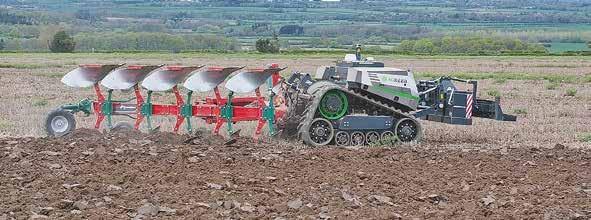
autonomous ploughing challenge took place in Stonegrave, North Yorkshire, in the UK, achieving an output of 20.8ha (51.37 acres) using a driverless AgBot 5.115T2 pulling a five-furrow Kverneland LO 300/85 plough.
Working on-land, at
16-inch (40cm) furrow widths, at a depth of 9-inches (22.5cm) preparing ground for maize and fodder beet, the 156hp rubber-tracked autonomous AgBot operated at forward speeds from 5.6kph up to 8kph on the rolling land, slowing only to carry out
headland turn sequences. On-board telemetry from the AgBot indicated fuel consumption from the diesel-electric powertrain totalled 382.72 litres over the 24-hour period, a figure of 18.4 litres/ha.
Adam Burt, Kverneland UK’s product specialist for ploughs
said, “The combination of the Kverneland LO plough and AgBot achieved an output that would have taken two working days to complete with an operator using a similar powered tractor pulling a five-furrow plough.”
He went on to explain
TRS TYRE and Wheel (Yokohama TWS NZ Ltd) is the exclusive distributor of the Alliance Tyre brand in New Zealand, solidifying its position as a leading provider of specialised off-highway tyre solutions for the agricultural, construction, industrial, and forestry sectors.
Alliance is a globally respected brand under Yokohama Off-Highway Tyres - sister company to TRS/Yokohama TWS - renowned for its innovation, performance, and durability in demanding environments.
The distribution agreement brings the full range of Alliance products directly under the TRS/Yokohama TWS NZ umbrella, ensuring improved availability, factory/technical support, and market reach across the country.
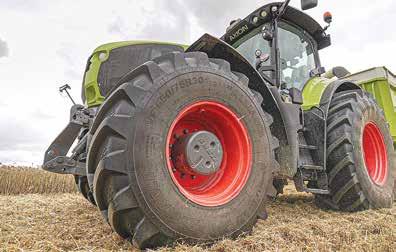
“We’re excited to represent a brand as trusted as Alliance with a long his-

•Ideal for Cattle Troughs
•High Flow
•Side/Bottom Mount
•Detach to Clean
•Compact/Robust


that equipped with Kverneland No.28 bodies, the LO plough is one of the easiest on the market to pull, with its low draft delivering low fuel consumption and a highquality finish. Burt also highlighted the efficiencies available from using autonomous tractors for repetitive tasks.
The AgBot stopped momentarily during the night, to top-up its 375litre fuel tank to complete the 24-hour work period. Ironically, the total area ploughed during the challenge was verified by local farmer and well-known ploughman, James Whitty, who was World Champion in 2003.
tory in the New Zealand market,” said Nigel Sherborne, managing director for TRS/Yokohama TWS NZ Ltd.
“It enhances our ability, alongside our existing stable of Yokohama, Trelleborg and Mitas to deliver worldclass off-highway tyre solutions to Kiwi customers who work in some of the toughest conditions.”
As the exclusive distributor, TRS Tyre and Wheel/Yokohama TWS NZ Ltd will provide access to the full Alliance Tyre portfolio, including agricultural, forestry, industrial, and construction products, with on-theground inventory and logistics support to ensure faster delivery and improved service levels.

•Ideal for Small/Low Demand Troughs •Low Flow
ve/Below Water Mount
•Built in Check-Valve

AgXeed UK sales manager, Peter Robinson, commented, “Having mapped the field boundary and created a job map complete with headland turns sequence, the AgBot worked tirelessly for 24 hours,” said Peter Robinson.
“The event has proved that autonomy is not just for just mundane, repetitive tasks, but can also be applied to more complex processes, such as ploughing.”
With multi-layer security systems built into the AgBot for operational safety, the 7-tonne tractor was equipped with a 1.5-tonne front weight to improve traction for the fully mounted plough.
An extensive nationwide dealer network will support customers on the ground, with direct factory backed technical expertise and after-sales service from a trusted local team.
TRS/Yokohama TWS NZ Ltd is part of Yokohama Rubber Co Group, a global leader in off-highway Tyre manufacturing and distribution. Alliance is a core brand within Yokohama Off-Highway Tyres, recognised for its advanced off-highway Tyre designs and trusted by professionals in over 120 countries. www.trstyreandwheel.co.nz


•Ideal for Compartment Troughs/Tanks
•High Flow
•Top Mount
•Detach to Clean
•Compact/Robust

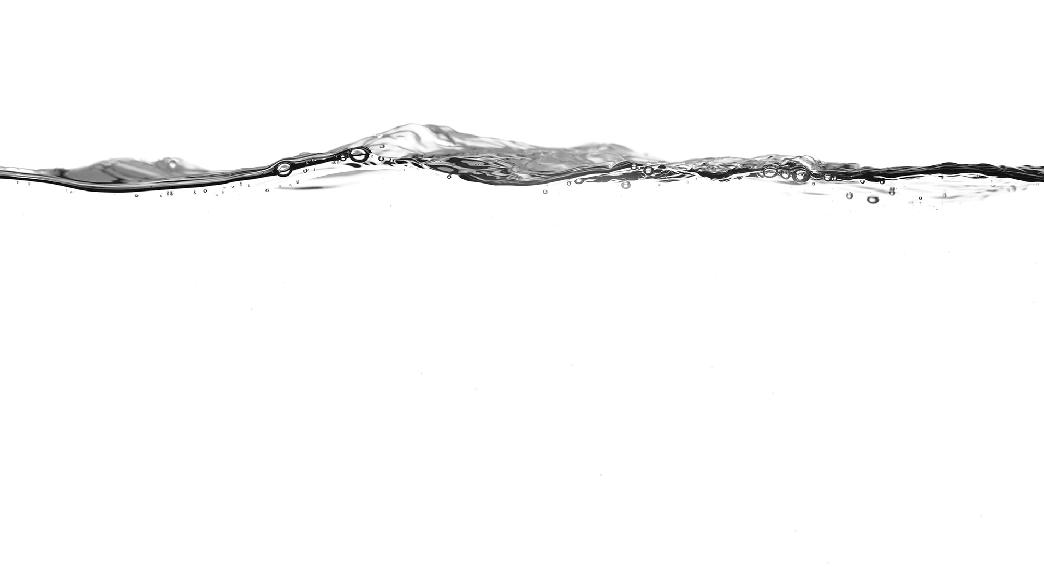
THE LONG-STANDING
DLG test organisation has awarded it’s “approved” quality mark to the Vogelsang 15-m BlackBird trailing shoe applicator.
Manufactured at the company’s base in Essen, Germany, the 15m BlackBird features two of the manufacturers
ExaCut ECQ precision distributors, the unit will carry the test mark for five years.
Tested according to the DLG test framework for both cattle and pig slurry application technologies, the results summary noted that the applicator presented good distribution quality
The product showed excellent distribution quality for both slurries at both flow rates, with the mean deviation well below 2%, earning the highest possible DLG rating (++) in all test results.
At start up, the time in seconds is measured until slurry flows from all outlets, meaning


The system allows direct mounting via 4-point linkage, incorporating an integrated catch device and a passive levelling system in the centre frame.
shorter times, resulting in a quicker full working width being reached.
The tested BlackBird applicator reached full distribution in a maximum of 2 seconds.
The test inspectors rated accessibility of the maintenance points as excellent, with all tasks


performed in an upright posture.
Operation and maintenance were rated as good, with simple steps and no need for special tools.
Replacing the cutting tools in the distribution head can also be done in a comparatively short
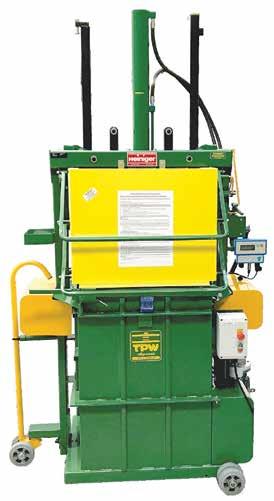
to a transport width of 2.95 metres. The system allows direct
WITH AGRICULTURE in New Zealand coming out of the doldrums over the last few months and the recent announcement of a 20% tax write-off for capital purchases, it likely that farmers will be spending on tractors.
In the European market, recent results for 2024 show that the market for 50+ hp tractors fell by around 6.5%, with a total just shy of 140,000 units. While the big three markets of France, Germany and Italy mirrored this trend, surprisingly it was bucked by Spain, Portugal and Belgium.
France, the most important market, delivered 33,225 tractors, a fall of 6.8% and Germany, the second largest fell by 3.4% to record 29,315 units. Italy held onto third position, despite the 12.3% to 15,448 machines compared to 17,613 tractors in 2023. Amalgamating the three markets resulted in a 77,988 total, compared to 83,623 registrations in 2023.
Elsewhere, the Polish tractor market fared badly, falling 17% to 8,590 units, from 10,311 in 2023, while the biggest drop was in Hungary, fell a whopping 49% to 1,446 units, compared to 2,824 the previous year. Already mentioned, Spain was a 2024 bright spot where registrations increased by a fifth to 10,390 units, Belgium rose 17.2% to 2,158 units, and Portugal was up by 10% to 5,825 tractors.
Looking at brands, John Deere topped the league table in the French tractor market, while also topping the rankings in nine other European tractor markets. Deliver-
mounting via 4-point linkage, incorporating an integrated catch device and a passive levelling system in the centre frame.
The elongated trailing shoe design is beakshaped, with pointed wear edge for better soil penetration and section control which is either mechanical or hydraulic.
The VOGELSANG
ExaCut ECQ precision distributor is available with 24, 30, 36, 42, and 48 outlets, using 40mm diameter distribution hoses.
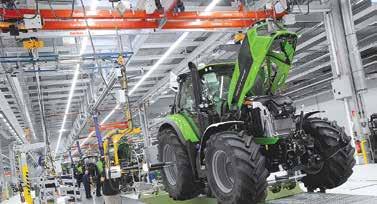
In the European market, the market for 50+ hp tractors fell by around 6.5% last year.
ing around 19,600 of the 140,000 new, 50hp+ tractors registered in Europe in 2024, 11,760, were in the three key markets of France, Germany and Italy.
Breaking the numbers down, 6,059 units were registered in France for the 18.2% share of the total 33,225-unit market This compared with 7,179 units and a 20.1% share of the 2023 market. Elsewhere, the global giant topped the tractor charts in Bulgaria, Croatia, Czech Republic, Hungary, Lithuania, Norway, Poland, Sweden and Spain.
New Holland registered roughly 14,300 50hp+ tractors, topping the charts in Belgium, Denmark, Italy, the Netherlands, Portugal and Slovenia. Despite recording 5.3% fewer tractors in Italy, it still topped the table with 2,725 units and a 17.6% share of the total market of 15,448 units.
Approx. 7,800 Massey Ferguson tractors were registered in 2024, 2,771 in the main market of France, where the brand secured fifth place. Its share fell by 12.2% in Germany to 1193 units, giving it 8th place
with a 4.1% market share.
Claas registered approx. 7,800 tractors in mainland Europe in 2024, of which 5,537 were in the top three markets of France, Germany and Italy- a similar number to both 2023 and 2022. Sales of 2,236 tractors (+6.9%) of the 29,315strong German market, gave it third place in the overall standings, with a share of 7.6% (6.9% in 2023).
Fendt consolidated its lead in the German market with 7,391 units and a 25.2% share. Up from 6,140 units (20.2%) in 2023, second placed JD was a distance behind with 4,659 units (15.9%). Fendt also performed well in France taking second spot with 4,226 units.
Kubota accounted for approx. 8,800 new tractors in Europe last year, down from approx. 9,200 units in 2023, although the brand did secure fourth positions in the two largest markets of France and Germany. When the three big markets are added together then Kubota recorded 5,803 units (5,688 in 2023 and 5,766 in 2023) and fifth place behind Agco, CNH, John Deere and SDF.
